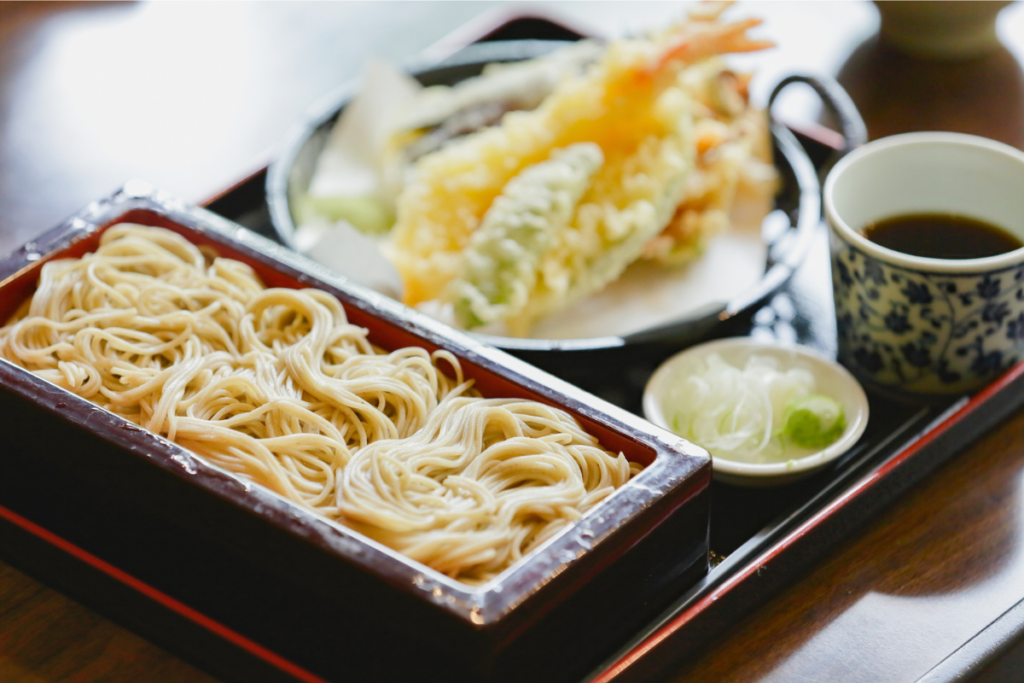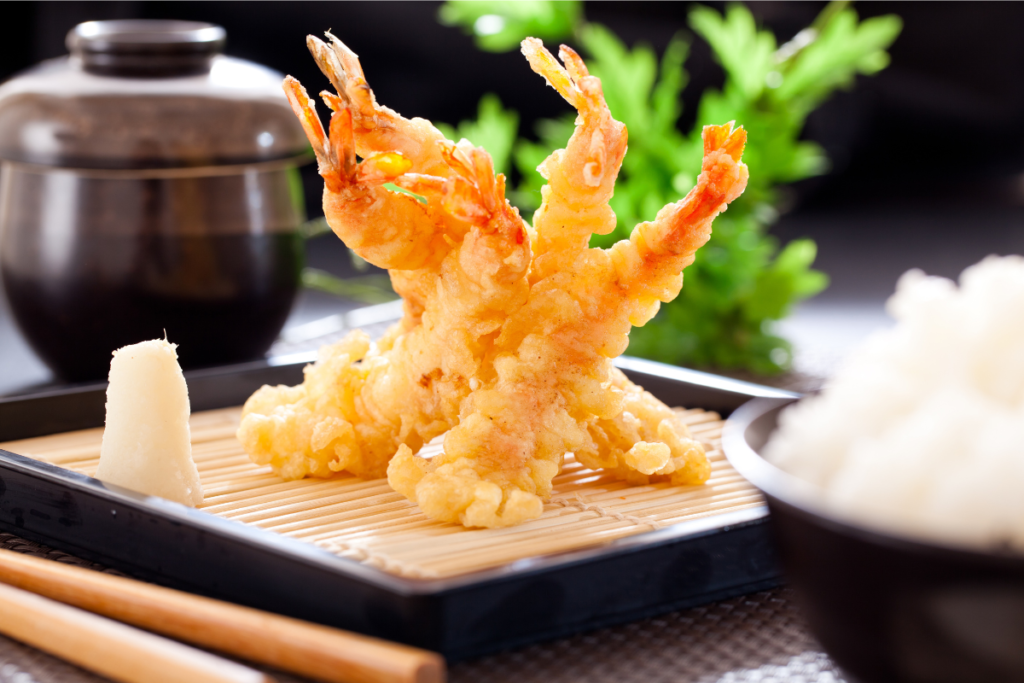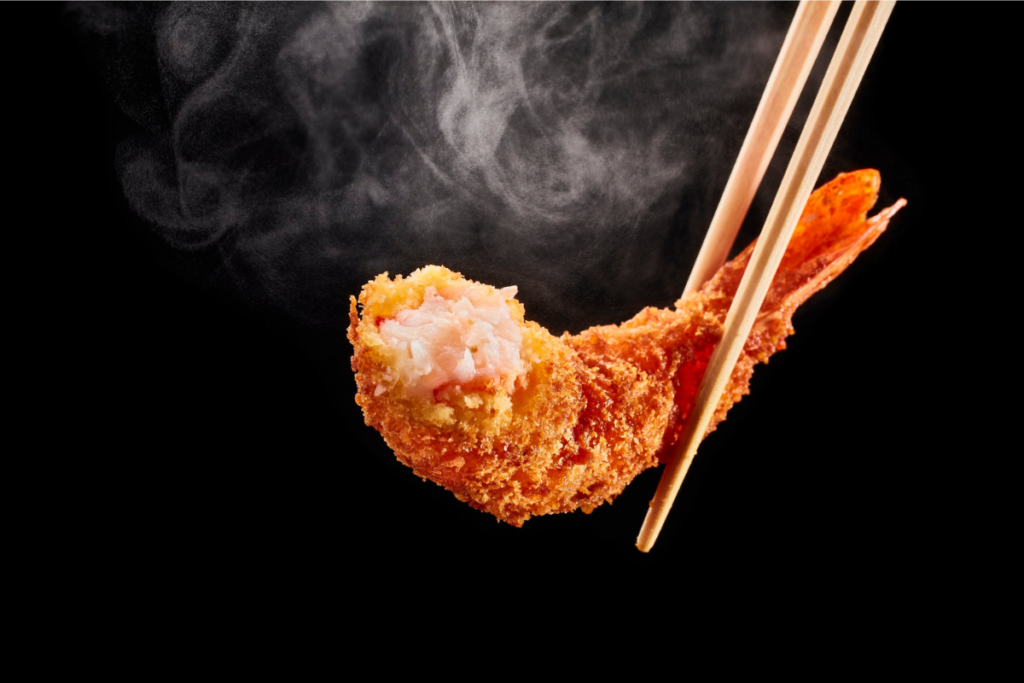Crispy, light, and deeply flavorful — Japanese tempura (日本の天ぷら) stands out as one of Japan’s most beloved culinary exports. From bustling street stalls in Tokyo to refined tempura counters in Kyoto, tempura is not just a dish, but a delicate expression of culinary craftsmanship. In this guide, we dive deep into the heart of what is a tempura (天ぷらとは何か), explore its history, ingredients, cooking techniques, and where you can savor the best tempura experiences across Japan.
Table of Contents
ToggleWhat is a Tempura (天ぷらとは何か)
Tempura (天ぷら) refers to seafood or vegetables lightly coated in a special batter and deep-fried to a golden crisp. Unlike heavier Western-style frying, Japanese tempura emphasizes a light, crunchy texture that brings out the natural flavors of the ingredients. It’s served with dipping sauces, salt, or grated radish and is enjoyed as part of noodles, rice bowls, or multi-course meals.
History and Origins of Tempura
Early Influences and Development
Tempura was introduced to Japan by Portuguese missionaries in the 16th century. The word “tempura” is believed to have originated from the Latin word “tempora”, referring to fasting days when meat was avoided, and fried vegetables or seafood were eaten.
Evolution Within Japanese Cuisine
Over time, Japanese chefs adapted the method, using local seafood and vegetables, and created a lighter batter using flour and cold water. In Edo (modern-day Tokyo), street vendors popularized tempura as quick and tasty fare, making it a commoner’s delight.
Modern Popularity in Japan
Today, japanese tempura (日本の天ぷら) is celebrated across all classes of dining, from humble eateries to elite kaiseki (懐石) meals. Regions like Tokyo, Osaka, and Fukuoka each bring their unique touch to tempura cuisine.
Key Ingredients for Authentic Tempura
Seafood: Shrimp, Squid, and Fish
Shrimp tempura (海老天ぷら) is perhaps the most iconic. Other popular seafood includes squid (いか), white fish like kisu (キス), and scallops.
Vegetables: Eggplant, Squash, and More
Seasonal vegetables such as eggplant (なす), kabocha squash (かぼちゃ), sweet potatoes, and shiitake mushrooms are commonly used. The variety showcases Japan’s regional harvests.
Tempura Batter and Preparation
The tempura ingredients (天ぷらの具 材) are dipped in a batter made from wheat flour, egg, and ice-cold water. The low temperature prevents gluten from forming, creating a crisp finish.
Tempura Cooking Techniques
Battering and Deep-Frying Methods
Achieving the right consistency is an art. The batter should be mixed lightly to keep it lumpy, not smooth, and the oil temperature must be carefully controlled between 160°C and 180°C.
Secrets to Achieving the Crispy Texture
Key to the airy texture is the cold batter and hot oil contrast. Also, tempura is fried in small batches to maintain the oil temperature and avoid sogginess.
Role of Skilled Chefs and Tools
Experienced tempura chefs train for years to master the timing, temperature, and presentation. Specialized copper pots and chopsticks are used to enhance control and heat distribution.
Types of Tempura Dishes
Shrimp Tempura and Ebi Variations
Shrimp tempura (海老天) is served on its own, over rice (tendon), or with noodles. Variations include jumbo ebi and battered prawn tails.
Vegetable Tempura and Seasonal Specialties
Vegetable tempura changes with the seasons—think autumn chestnuts, spring bamboo shoots, and Japanese maple leaves (日本もみじ) fried as decorative treats in Kyoto.
Chicken Tempura and Regional Styles
Chicken tempura, especially popular in southern Japan, uses thigh meat for juiciness and is often seasoned with garlic or ginger.
Kakiage and Assortments
Kakiage is a mixed fritter of thinly sliced vegetables or seafood. It’s crunchy, rustic, and often served atop rice bowls or soba noodles.
Tempura in Japanese Cuisine

Tempura Udon and Soba Noodles
A crispy shrimp tempura topping floating over a hot bowl of udon (うどん) or soba (そば) makes for a satisfying meal, balancing crunch with savory broth.
Tempura Donburi and Rice Bowls
Tendon (天丼) is a rice bowl topped with tempura and drizzled with sweet soy sauce. It’s a hearty, popular lunch item.
Teishoku and Tenzaru Sets
Teishoku (定食) includes a full meal set with tempura, miso soup, rice, and pickles. In summer, tenzaru soba (天ざるそば)—cold soba served with tempura—is refreshing and light.
Creative Fusion and Regional Variations
From tempura sushi rolls to matcha batter tempura, modern takes on tempura flourish in Tokyo’s trend-setting eateries.
Dipping Sauces and Condiments
Tsuyu and Tentsuyu Sauce
Tentsuyu (天つゆ) is a dipping sauce made from dashi, soy sauce, and mirin. Tempura is gently dipped to enhance, not overpower, its taste.
Flavored and Matcha Salt
Flavored salts, including matcha salt (抹茶塩) or yuzu-infused salt, are often served at high-end establishments to highlight individual ingredients.
Grated Daikon Radish and Ginger
A dollop of grated daikon (大根おろし) or fresh ginger adds a cooling contrast and aids digestion.
Dining at Tempura Restaurants in Japan

High-End Tempura Experiences
For a premium experience, dine at a tempura omakase counter. Chefs fry each piece individually before serving. One iconic destination is Tempura Hirao (天ぷらひらお) in Fukuoka, which offers fresh-made tempura in a casual yet revered setting.
➡️ Learn more about Tempura Hirao (official site).
Popular Tempura Restaurant Chains
Affordable chains like Tendon Tenya (てんや) offer great value and variety. These are perfect for quick meals during travel.
Ordering and Etiquette
At traditional spots, you’ll sit at the counter and enjoy freshly fried pieces in sequence. It’s polite to eat each item immediately for the best flavor and crunch.
Tips for Enjoying and Making Tempura
Selecting Quality Ingredients
Use seasonal and fresh ingredients—fresh shrimp, firm vegetables, and good-quality flour are essential for great flavor.
Cooking at Home: Recipe Basics
Use ice-cold water, avoid overmixing the batter, and fry in small batches. A neutral oil like canola or sesame oil works best.
Common Mistakes to Avoid
Avoid letting the batter sit too long or overcrowding the pan. Always drain on a wire rack, not paper towels, to maintain crispness.
Final Thoughts
Japanese tempura (日本の天ぷら) is much more than fried food—it’s a delicate blend of technique, seasonality, and balance. Whether you’re savoring it at a legendary restaurant like Tempura Hirao (天ぷらひらお) or recreating it in your kitchen, tempura is an art form to be appreciated.
Explore more Japanese culinary journeys on our blog, such as Sukiyaki in Japan: A Flavorful Guide to Traditional Hotpot, or dive into peaceful settings with Japan’s Zen Gardens for Meditation.
You might love these too
Let’s Stay Connected!
Our newsletter brings you peaceful places, meaningful traditions, and unseen beauty.
You might love these too
Let’s Stay Connected!
Our newsletter brings you peaceful places, meaningful traditions, and unseen beauty.
You might love these too
Let’s Stay
Connected!
Our newsletter brings you peaceful places, meaningful traditions, and unseen beauty.
